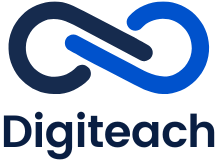The seamless flow of data and services between diverse applications and systems has become crucial for organizations to prosper in today’s linked digital landscape. Application Programming Interfaces (APIs) are useful in this situation. Applications now communicate in a completely new way thanks to API development and integration, which has opened up new business options, increased productivity, and improved user experiences. We will explore the significance, advantages, and best practices of API development and integration.
APIs serve as the intermediaries that allow different software applications to interact and share data with each other. They define the methods and protocols that govern how software components should communicate. APIs are the backbone of modern digital ecosystems, enabling businesses to streamline processes, integrate services, and leverage external functionalities. By providing a standardized interface, APIs simplify complex tasks and facilitate collaboration between disparate systems.
Benefits of API Development and Integration
- Enhanced Connectivity: APIs enable seamless integration between applications, databases, and platforms, promoting real-time data synchronization and enabling businesses to harness the power of interconnected systems.
- Scalability and Flexibility: API-driven architectures facilitate modular development, allowing businesses to add or update functionalities without disrupting the entire system. APIs enable quick adaptation to changing business needs and ensure future scalability.
- Expanded Market Reach: APIs provide a gateway for businesses to expose their services to third-party developers, fostering the creation of complementary applications and driving innovation. This opens up new markets and revenue streams.
- Improved Efficiency and Productivity: APIs automate processes, reduce manual effort, and eliminate data silos. By integrating diverse systems and services, businesses can streamline workflows, optimize resource utilization, and enhance overall operational efficiency.
- Seamless User Experience: APIs enable the integration of external services and data sources, enriching user experiences. Businesses can leverage APIs to personalize content, provide single sign-on functionality, or integrate third-party services like payment gateways, mapping, and social media.
Best Practices for API Development and Integration
- Designing for Simplicity and Consistency: Well-designed APIs follow standards and best practices, adopting a consistent naming convention, clear documentation, and straightforward endpoints. Simplicity enhances usability and encourages wider adoption.
- Security and Authentication: APIs handle sensitive data and require robust security measures. Implementing authentication protocols, encryption, and access controls ensures data integrity and protection against unauthorized access.
- Versioning and Backward Compatibility: As APIs evolve, it’s crucial to support backward compatibility while introducing new features. Versioning allows developers to adapt to changes while minimizing disruption for existing users.
- Comprehensive Documentation: Clear and comprehensive API documentation is vital for developers to understand and integrate with the API effectively. Documentation should include detailed examples, sample code, and troubleshooting guides.
- Testing and Monitoring: Rigorous testing throughout the API development lifecycle is essential to identify and fix issues. Additionally, implementing monitoring and analytics tools helps track API usage, performance, and identify areas for improvement.
Types of APIs
- Web APIs: These are APIs that allow applications to communicate over the internet using standard protocols such as HTTP. Web APIs are commonly used for accessing online services, retrieving data from servers, and performing various operations.
- Library or Framework APIs: These APIs are provided by software libraries or frameworks to facilitate development within a specific programming language or platform. They provide pre-built functions and modules that developers can use to simplify and speed up their application development process.
- Internal APIs: Also known as private APIs, these APIs are developed and used within an organization to enable communication between internal systems, applications, and services. Internal APIs help streamline processes, improve collaboration, and maintain consistency across different departments or teams.
- Third-Party APIs: These APIs are developed by external organizations and made available for developers to integrate with their applications. They offer access to a wide range of services, including social media platforms, payment gateways, mapping services, weather data, and more.
API Integration Challenges and Solutions
- Data Mapping and Transformation: Integrating APIs often requires mapping and transforming data between different systems with varying data structures. Proper data mapping and transformation techniques, such as using data transformation tools or middleware, can help overcome this challenge.
- Error Handling and Exception Management: When integrating multiple APIs, error handling becomes crucial. Implementing robust error handling mechanisms, such as providing meaningful error messages and implementing retry logic, ensures a better user experience and smoother integration.
- Rate Limiting and Performance Optimization: Some APIs impose rate limits to prevent abuse and ensure fair usage. Developers must consider rate limiting and optimize API calls to avoid performance bottlenecks. Techniques like caching, batching, and asynchronous processing can help improve overall performance.
- API Versioning and Deprecation: As APIs evolve, it’s important to manage versioning and deprecation effectively. Developers should communicate any changes or deprecations to consumers well in advance, provide migration guides, and maintain backward compatibility when possible.
Future Trends in API Development and Integration
- GraphQL: GraphQL is an alternative to RESTful APIs that offers more flexibility and efficiency in data retrieval by allowing clients to specify the exact data they need. It provides a unified interface for querying multiple data sources and has gained popularity in recent years.
- Serverless Architecture: Serverless computing, powered by services like AWS Lambda or Azure Functions, is gaining traction. APIs can be built and deployed as serverless functions, eliminating the need for infrastructure management and providing scalability and cost efficiency.
- Event-Driven Architecture: Event-driven APIs enable real-time communication and integration by leveraging events and messages. This approach allows systems to react to events and triggers, facilitating asynchronous communication and reducing coupling between components.
- Machine Learning APIs: With the rise of artificial intelligence and machine learning, APIs for machine learning models have become increasingly important. These APIs enable developers to leverage pre-trained models and build intelligent applications without deep knowledge of machine learning algorithms.
API development and integration have become indispensable in today’s digital landscape. By embracing APIs, businesses can enhance connectivity, improve efficiency, and provide seamless user experiences. Understanding different types of APIs, overcoming integration challenges, and keeping up with emerging trends will ensure organizations can fully leverage the power of API development and integration for continued success in the future.






